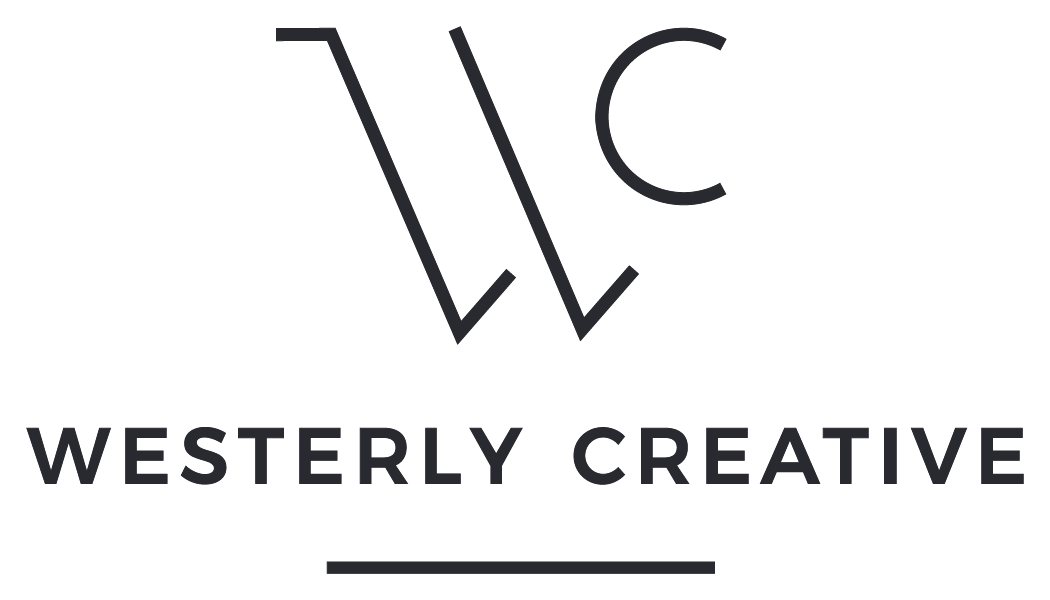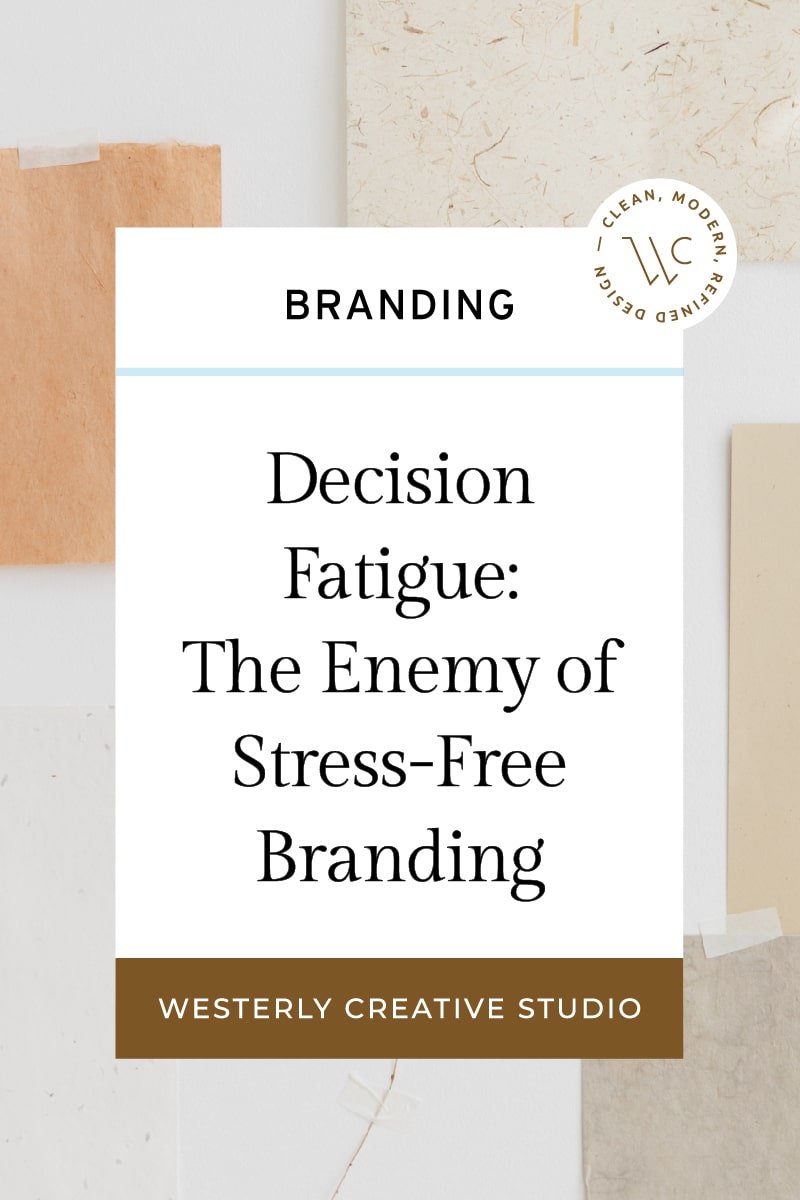Decision Fatigue: The Enemy of Stress-Free Branding
When going through the branding process, it’s very easy to get decision fatigue. This means that after a period of time of making decisions, it becomes harder to be decisive or intentional in your selection process.
Why is this bad? When decision fatigue occurs, people are more likely to fall prey to the “everyone and everything” mindset with branding instead of staying focused on creating a specific experience for a specific person. (Curious what that looks like? Check out our blog “Defining Your Ideal Client and Why That’s Important”.)
It also means that the quality of answers go down and that your connection to your brand becomes a burden instead of empowering.
Identifying decision fatigue
All options for all questions feel equal
You don’t feel like your decision matters
You become antsy and can’t sit still
Your responses become akin to filling in a test answer sheet with a pattern that feels “right”
Thinking about questions makes you tired
Simple decisions make you feel overwhelmed or anxious
You start answering questions quickly instead of contemplating the issue at hand
Validation
First and foremost, branding is hard. There are a lot of fun parts of branding and for some, brand strategy is that! For others, it’s intimidating. Social media likes to pretend that it’s just fun colors and magically created logos that launch businesses into instant success through a few phone calls and some typing on a computer. Oh goodness, that’s just not true.
Branding takes a lot of intentional processing. It requires you to look at yourself and your business in a way that you’ve probably have never done before. It asks a lot of questions that are hard because you don’t have the answers yet — that’s why you opted to hire a professional to help you!
Feeling discouraged or tired or whatever negative emotion you may be experience is normal and okay. I have complete ability in you moving beyond that and finding the answers and results you are seeking but for all that is aesthetic, give yourself time, grace, and the recognition that you are human.
Tips to avoid / ditch decision fatigue
.01 | Give yourself some dopamine before starting the task.
Clear out your inbox, start a load of laundry, empty the dishwasher, etc. All of these tasks are easy, help to declutter your mind, and give you a boost of success that can change your mindset into one of productivity and empowerment instead of exhaustion and indecisiveness.
.02 | Take a break when everything gets murky!
Get up, make some tea, take a walk. After you’ve allowed yourself a little mental relaxation, then come back to the task at hand. Sometimes letting your brain process a task in the background can bring you the best results when you feel stuck.
.03 | Create a place where you can get work done.
If you do have a desk, make sure it’s clean, the lighting comfortable, and that you have enough space to get your work done. Also, we all know that if you hate your chair you will resent your desk. Make sure that sitting at your desk isn’t causing you stress before you even start your task. Bonus points if you have something calming nearby, like a piece of art or a plant … or 5 plants if you’re like me.
If you don’t have an office space, pick a place with a specific pillow or blanket. By repeating this habit, you’ll train your brain to know that that’s the time for getting work done instead of resting.
.04 | Give yourself a time limit.
Sometimes the completion of tasks become a way we judge ourselves and that can interfere with healthy, focused processing. If that sounds familiar to you, remove the pressure of getting it all done in one sitting. You’re more likely to feel energized enough to be productive for a set period of time. However, make sure that you’re giving yourself a large enough time frame to allow you to get into the process and gain your momentum.
.05 | Be okay with making mistakes!
No one has the right answer every time. Allow yourself to write things down, scratch them out, doodle on a sticky note, and write out what is causing you pause or confusion. Sometimes having the right question prompts the right answer. At the very least, giving yourself space to figure out a solution is a necessary step to not burning out. Rushing through branding never gave anyone confidence at the end.
.06 | When you get stuck …
If you find you are having trouble deciding between a / b / c / d, put them in order for most to least important. Often times, you’ll find that there may be more than one valid answer but only one or two of those are better than the rest. Embrace the gray of life and don’t get yourself stuck in one answer for every question.
Remember, most people find writing about themselves to be difficult.
We tend to have a romanticized view of writing. Think Pinterest boards in 2010, like the beautiful image below. You’re supposed to pour some tea while wearing a flower crown and crawl into a West Elm worthy bed (somehow not spilling) and jot down all the answers because inspiration comes easily when you’re so comfortable.
It really is okay if answers don’t come easily. You’re learning to think about your business in a whole new way and having to make a lot of micro decisions that you know will impact your life.
Was there a piece of advice you expected to be on this list?
Often, people think that discussing their project with someone not currently involved in the process will help.
Sorry to burst that bubble, but that’s rarely the case. Few people are trained in the process of branding, so their opinions are going to come from personal preferences instead of expertise. The amount of times I asked for feedback in the beginning of my career and got nonsensical answers was mind boggling to me.
For example, I’d ask someone which color palette they preferred. They’d squint at my screen, take a moment to process, and then would confidently tell me which one they thought was better. However, when asking why, I’d find it was because:
Their kindergarten teacher had a poster with those same colors and it was their favorite poster.
They hate the color green because they are allergic to grass.
They already know of a brand who has the other color palette, even though the rest of the branding is not related and it’s in a very different industry.
Obviously, these are just random examples but people when asked opinions on branding tend to give the first thing that comes to their head. It’s like a Rorschach test.
Most people interact with brands and have little to not concrete opinions on the decision making that went into that brand. They aren’t going to look at a major corporation and think, man that serif font is reminding me of my mean Aunt Dorris because she liked old books.
They want to be helpful, they want to have an opinion — there’s no ill intent here. In fact, there’s a good chance that they are trying to pick the option they think you want them to because their motivation is to support you.
It’s just not strategic and the sampling pool at the very least is too small. The chance that that person is also your ideal client is very rare. If you do ask someone for their opinion, try to frame the question in a very specific way that helps them focus on a more objective view than their own.
It’s also good to make sure that they know:
About the goals of your business
What you’re hoping to convey
Who you are looking to attract
How you plan on using your branding
Last but not least, you’ve got this!
✨ You’re investing in your business. In yourself. You’re doing something hard and important and wonderful. Give yourself a break, pour some coffee, and make sure that you are supporting yourself through this process.



